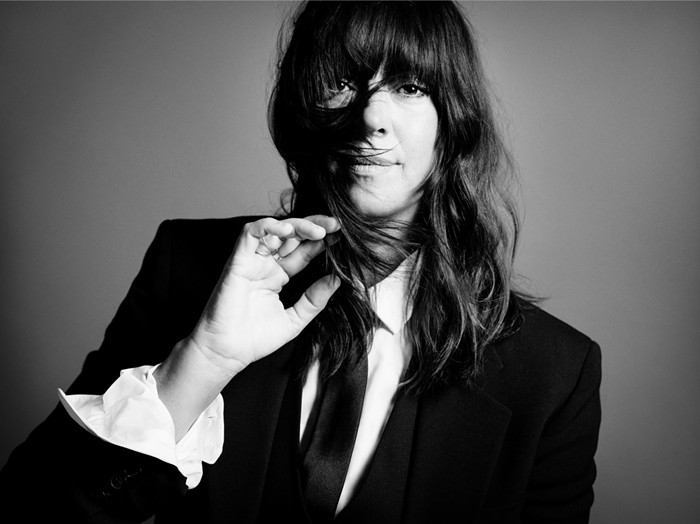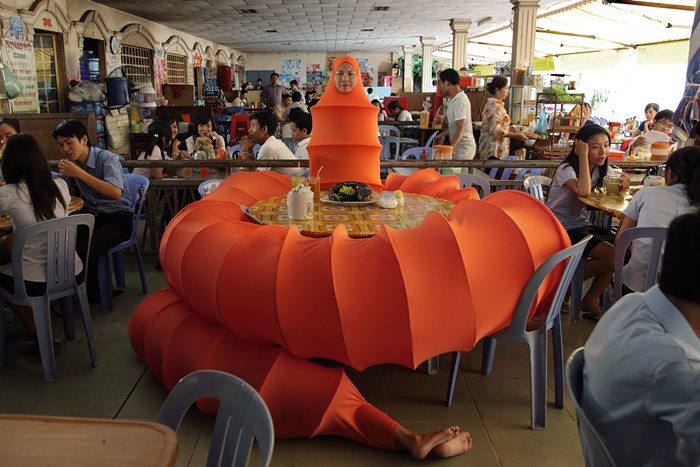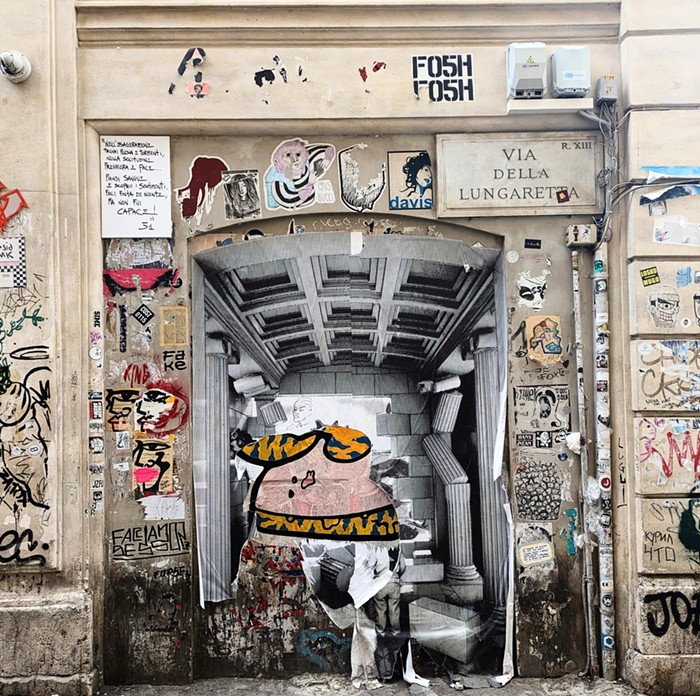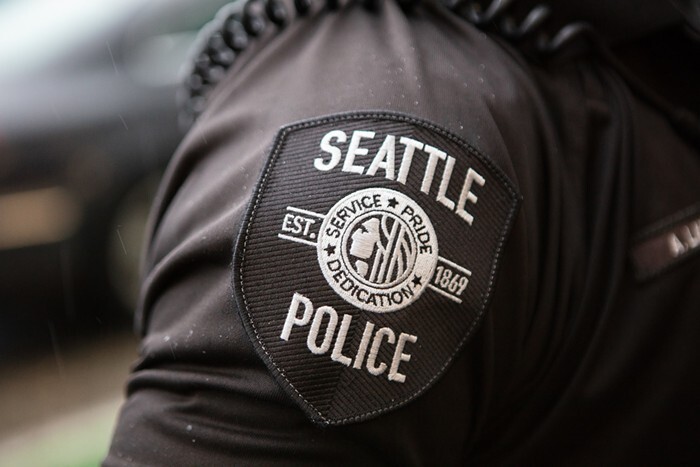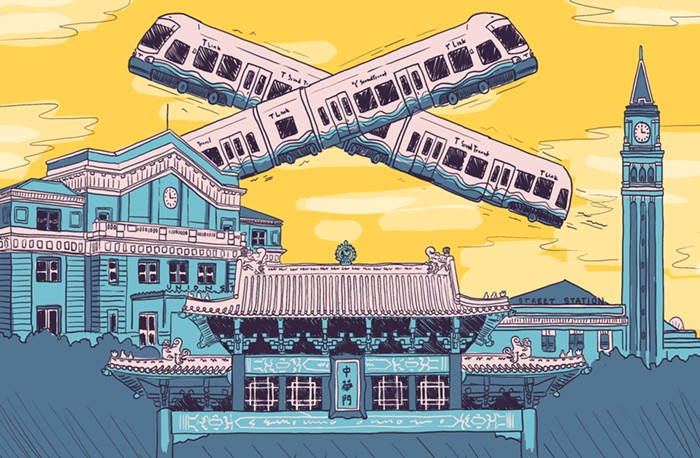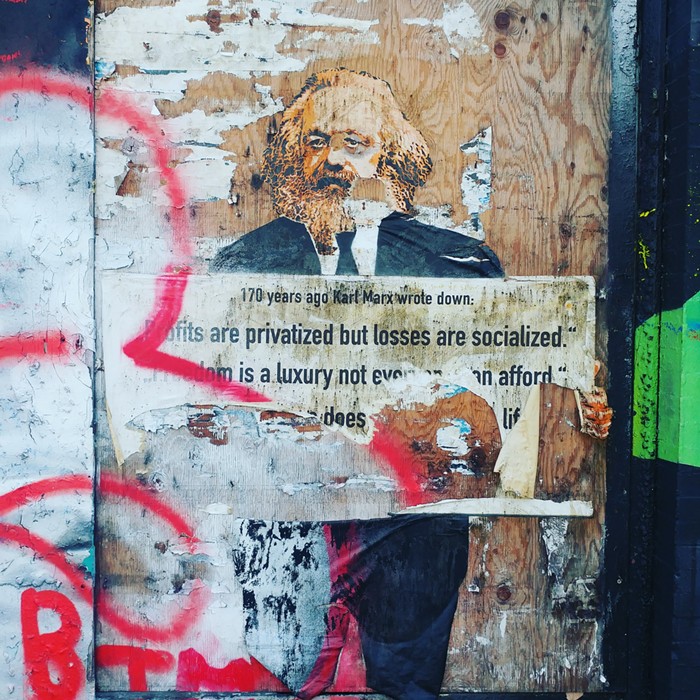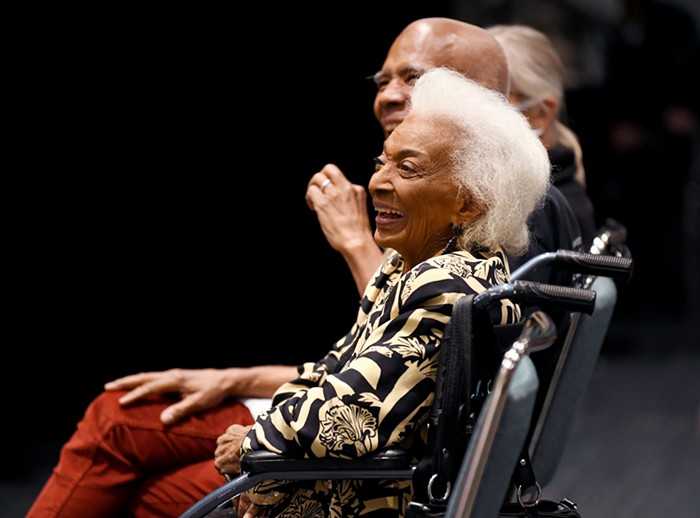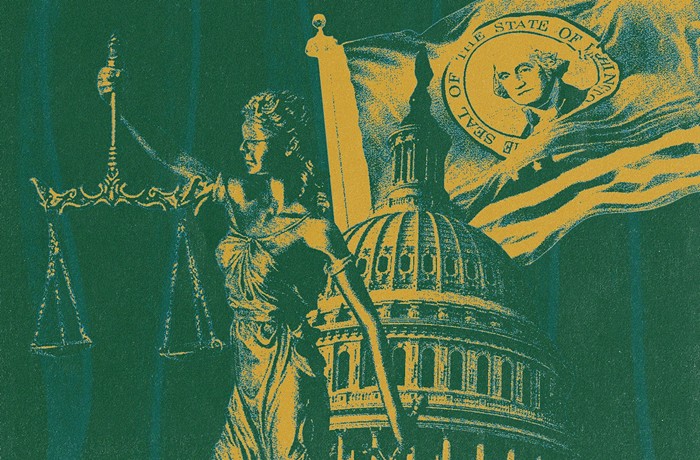In plate 51 of Francisco Goya's The Disasters of War series, men and women in rags claw at a pot of food while children wait. Adults who bypass children to feed themselves first: This is what Spaniards are reduced to in the aftermath of the French Revolution that Goya, and so many democratic liberals, once idealized. "Gracias á la almorta," Goya's caption reads, "la almorta" referring to the wild pea that can be a staple in famine-struck lands and was in Spain in the early 1800s.
In a cruel twist of biology, though, a diet made entirely of wild peas is poisonous. To Goya's point: We eat systems, not just foods.
The Seattle artist Jason Hirata used plate 51 as part of the basis for Fodder and Options, his two new related installations riffing on the global corporate food system at Henry Art Gallery.
Fodder and Options are brilliant, sad, funny, wonkish, and slightly in need of help from accompanying text. Nina Bozicnik's supporting curatorial label is great, but a copy of the artist book that's part of Fodder should be in the gallery, too. The occasion of the exhibition is that Hirata won the $12,500 Brink Award, given by John and Shari Behnke to an artist whose work exists "on the brink," and Hirata, put on the spot, demonstrates why he's a good choice. Fodder and Options synthesize his geekiness and his material austerity with the inclusive way that he notices what's already in the world and reformulates it with a heightened sense of mystery.
Mystery hangs over these two installations nearly literally. In the galleries, Hirata installed his drawings of Goya's beggars mounted on galvanized steel panels and his "word drawings" of handwritten menu specials advertising foods of various cultures around the world. But above the galleries—and you don't notice it at first—there is another world.
Usually, these ceilings are a grid of unremarkable opaque panels. Hirata removed most of the grid, leaving only a few panels in place as if they were redactions or bleeps. What gets revealed is a whole attic area, where the pointed roof and the grimy skylights are now exposed. It's a messy, magical, and connective place contrary to the white cube below. It has bright-red pipes and old wood beams, cement walls outfitted strangely with fallow projector screens, and stretches of fencing for no apparent purpose. In revealing the architecture's innards, Hirata uncovers the structure behind the art. The system—with bleeps.
Meanwhile, down in the gallery of Fodder, Hirata uses Goya's drawings of starving bystanders, the products of an unseen system of forces of war and power. Hirata made four drawings of Goya's beggars. Each one is made in oil pastel on watercolor paper and mounted to a sheet of galvanized steel.
The pastel is rust-colored; galvanization is the process of adding rust-resistance. Am I reading too much into it? Here's another question: In Options, room fans on the floor are arranged in roughly the same composition as Goya's semicircle of beggars. Or are they? Is it a visual pun or is Hirata just messing with me? (Is he laughing at me right now?)
Once, in a twist on the idea that art isn't art unless it's got the artist's own blood, sweat, and tears in it, Hirata made delicate, awkward abstract drawings with ink made from his own sweat and the sweat of his gallerist, displayed with a small snapshot of him and his dealer goofily, sweatily jumping rope. It was art for art people. Another time, he created his own versions of the colorful, heavily Photoshopped posters advertising bubble tea to give out to actual vendors in Seattle's International District. And once, he sent out tiny mysterious instructions to willing participants via text message. He likes to remove himself and work with other people as much as possible to keep, he says, from getting too trapped in his own boring consciousness. But having followed his work for seven years, I find his consciousness interesting, and more so than the hoary (and questionable) concept of evacuating subjectivity. I like when I sense Hirata coming through, as I do at the Henry.
A blinding light dangles down into the gallery of Fodder. It's the main source of illumination. It's a naked LED double bulb shaped like an equal sign turned 90 degrees. Look straight at it, and it hurts like the sun, but cold white. Attached to its side there's a blown-up printed GE logo—that familiar, reassuring old blue-and-white swirl. The GE logo, and a fancier logo from a New York hotel that's part of luxury Mumbai chain the Taj, are printed on the paper next to the beggar drawings, as if the companies issued not only the light that hits the art but the surface it's made on, too.
There is so much to think about here (Fodder), about how corporations today produce beggars and then sponsor charity programs, lending spare cash—and logos—to scenes of need. An era of corporate responsibility wears a better face than an earlier era Hirata references, in the pages of a book that's part of Fodder but only available at the museum's front desk. Hirata typed portions of a 1981 speech given by Jack Welch when he became CEO of GE. The speech is known as the dawn of an extreme brand of ruthlessness driven by maximizing shareholder profits. Hirata added pretty scribbles of vines and flowers in pen, pencil, and oil pastel on top of the CEO's words, obscuring the message. They're wild peas. You can eat wild peas safely, just not if they're your main source of food—not if you're one of the hungriest.
Options, Hirata's partner installation in the facing gallery, has several Lasko room fans set on the floor, plugged into the wall sockets, and turned on.
The suction keeps pieces of paper with handwritten menu items stuck to the fans' fronts. The items come from various cultures, or unholy blends of cultures, or global food companies. "Beal Road Quencher," "HoneyWater," and "TacoTime" are all stuck to one fan. I find the Canadian brand "HoneyWater" online; I can't find "Beal Road Quencher," which sounds like some postcolonial product marketed in the tropics.
The invisible circulation system of the air is required to keep the specials on offer. The air in this room is like the LED light in the other room, or the revealed ceiling above, inflecting everything. And like the steel panels in Fodder, the fans in Options are commonly manufactured. Air filters Hirata placed between the papers and the fans have Home Depot tags. Presumably, the dust in the air will collect over time on these filters, rendering the circulation system visible.
One fan offers the specials "Chicken Tikka Masala Pizza" and "Plumpy'nut." You can't buy Plumpy'nut. It's a special food made for famine victims by one French company that holds the patent and stays profitable by keeping others from making it, despite the fact that the company can't meet world demand.
On my second visit to see Hirata's show, I brought Stranger food writer Angela Garbes, thinking it would be interesting to hear her reactions. By coincidence, we stopped on the way at a new novelty pizza place on Capitol Hill called Ian's. Garbes tried the "Macadilla," a slice of spicy chicken quesadilla pizza with macaroni and cheese inside. Later, she regretted this. She did not regret the art, or the byzantine, effortful way it raised the often-simplified issues of food ethics. She, too, could feel the great dissonant distance between Hirata's conceptualist style and the smells, tastes, and corpulences that his works conjure.
Our global system produces such alluring monstrosities.

